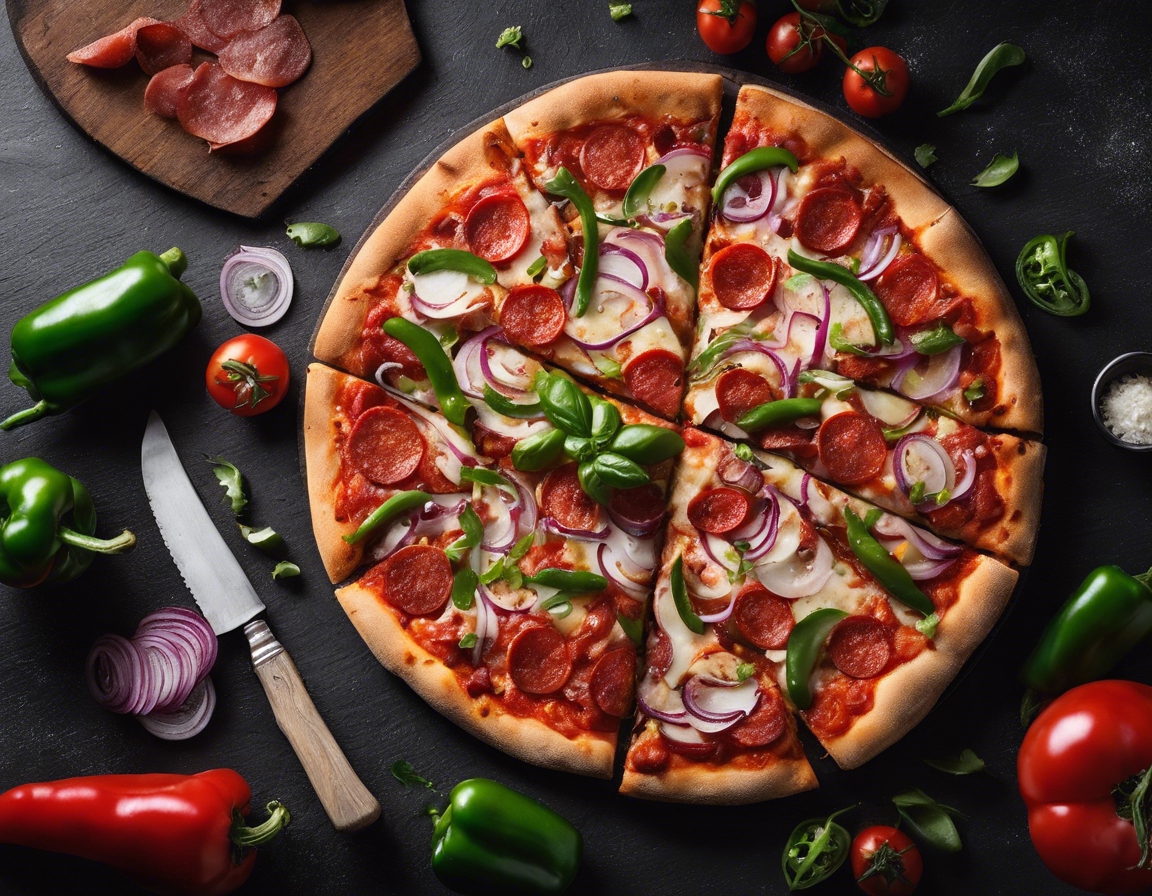Thin vs. thick crust: a pizza showdown
When it comes to pizza, the crust is as crucial as the toppings. It's the foundation that holds all the savory goodness together. But in the world of pizza aficionados, there's an ongoing debate that's as old as the dish itself: thin crust or thick crust? Let's dive into this delicious dilemma and see if we can come to a consensus, or at least understand what makes each style special.
The Case for Thin Crust
Thin crust pizza has its roots in Italy, specifically in Naples, where the concept of pizza began. This style has gained immense popularity worldwide, especially among those who prefer a crunchier texture and a more pronounced flavor from their toppings.
Thin crust pizzas are known for their crispy texture and minimalistic approach. The dough is rolled out to be as thin as possible, providing a delicate base that allows the flavors of the fresh toppings to shine through. It's often cooked at high temperatures for a short period, resulting in a light, crisp crust with a slight chew.
Given the delicate nature of thin crust, it's best paired with a balanced amount of toppings. Classic choices like Margherita, with mozzarella, tomatoes, and basil, work wonderfully. However, it's also the perfect canvas for gourmet toppings like prosciutto, arugula, and shaved Parmesan.
The Case for Thick Crust
Thick crust pizza, often associated with the Chicago deep-dish style, offers a heartier eating experience. This style is beloved by those who enjoy a more substantial, bread-like base for their pizza.
Thick crust pizzas are characterized by their high edges and a doughy, soft interior. The crust is robust enough to support a generous amount of toppings, sauce, and cheese. It's baked at a lower temperature for a longer time to ensure the middle is fully cooked without burning the thicker edges.
With a thicker base, this crust can handle a variety of toppings, from layers of different cheeses to an assortment of meats and vegetables. Classic combinations like sausage and peppers or a fully loaded supreme pizza are popular choices that take advantage of the thick crust's sturdiness.
Comparing the Two: A Flavor and Texture Analysis
The thin crust offers a more direct flavor experience, with the toppings taking center stage. In contrast, the thick crust provides a more balanced bite where the taste of the dough is as present as the toppings.
The texture of the crust can significantly affect the overall mouthfeel of the pizza. Thin crusts deliver a satisfying crunch followed by a quick chew, while thick crusts offer a soft, bread-like chew that lasts longer and feels more filling.
Health and Nutritional Considerations
For those mindful of their calorie intake, thin crust pizzas typically have fewer calories due to less dough. However, the toppings chosen can quickly close this gap.
While the thick crust might pack more carbs, it can also provide more fiber if whole-grain flour is used. It's important to consider the overall balance of ingredients when assessing the nutritional content.
Regional Preferences and Cultural Significance
In regions like New York and Italy, thin crust is the reigning champion, celebrated for its simplicity and adherence to tradition.
Conversely, cities like Chicago and Detroit are known for their love of thick, hearty crusts that make a meal feel more like an event.
Consumer Trends and Market Analysis
Consumer preferences vary widely, with some swearing by the crispiness of thin crusts and others by the comforting chew of thick crusts. Social media trends and online reviews often reflect this divide.
The ongoing debate between thin and thick crusts keeps the pizza industry dynamic, encouraging pizzerias to innovate and cater to diverse tastes.





Comments (0)